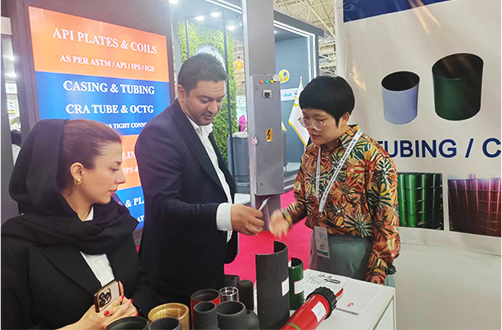- Afrikaans
- Albanian
- Amharic
- Arabic
- Armenian
- Azerbaijani
- Basque
- Belarusian
- Bengali
- Bosnian
- Bulgarian
- Catalan
- Cebuano
- Corsican
- Croatian
- Czech
- Danish
- Dutch
- English
- Esperanto
- Estonian
- Finnish
- French
- Frisian
- Galician
- Georgian
- German
- Greek
- Gujarati
- Haitian Creole
- hausa
- hawaiian
- Hebrew
- Hindi
- Miao
- Hungarian
- Icelandic
- igbo
- Indonesian
- irish
- Italian
- Japanese
- Javanese
- Kannada
- kazakh
- Khmer
- Rwandese
- Korean
- Kurdish
- Kyrgyz
- Lao
- Latin
- Latvian
- Lithuanian
- Luxembourgish
- Macedonian
- Malgashi
- Malay
- Malayalam
- Maltese
- Maori
- Marathi
- Mongolian
- Myanmar
- Nepali
- Norwegian
- Norwegian
- Occitan
- Pashto
- Persian
- Polish
- Portuguese
- Punjabi
- Romanian
- Russian
- Samoan
- Scottish Gaelic
- Serbian
- Sesotho
- Shona
- Sindhi
- Sinhala
- Slovak
- Slovenian
- Somali
- Spanish
- Sundanese
- Swahili
- Swedish
- Tagalog
- Tajik
- Tamil
- Tatar
- Telugu
- Thai
- Turkish
- Turkmen
- Ukrainian
- Urdu
- Uighur
- Uzbek
- Vietnamese
- Welsh
- Bantu
- Yiddish
- Yoruba
- Zulu
Crossover Sub Drilling Techniques for Enhanced Efficiency and Precision in Exploration Projects
Crossover Sub Drilling A Game Changer in Oil and Gas Exploration
In the ever-evolving landscape of oil and gas exploration, efficiency and precision are paramount. One of the innovative techniques that has emerged to enhance drilling operations is crossover sub drilling. This method combines various technologies and approaches to optimize the drilling process, thereby reducing costs and improving overall productivity.
Crossover sub drilling refers to the use of a specific type of downhole tool known as a crossover sub, which is designed to facilitate the transition between different drilling techniques or tools. This flexibility allows operators to adapt to varying geological conditions without the need for extensive modifications to the drilling rig or the drilling program. By effectively bridging the gap between conventional rotary drilling and more advanced methods such as directional drilling or managed pressure drilling, crossover sub drilling can significantly streamline operations.
The primary advantage of crossover sub drilling lies in its ability to reduce non-productive time (NPT). In traditional drilling operations, switching from one drilling method to another can lead to delays, increased costs, and more complications. The crossover sub minimizes these transition periods, enabling continuous drilling operations even in challenging formations. This continuity not only saves time but also maximizes the potential yield of the well being drilled.
Moreover, crossover sub drilling enhances the versatility of drilling rigs. A conventional drilling rig may not be specifically constructed for certain advanced techniques, which can limit its application in various fields. However, with the implementation of a crossover sub, a single rig can tackle different drilling methods, thus expanding its utility. This adaptability is especially valuable in today’s environment, where oil and gas operators are often required to explore diverse geological formations under varying conditions.
crossover sub drilling

In addition to improving efficiency, crossover sub drilling also contributes to better data acquisition and analysis. The ability to switch between drilling techniques allows operators to gather a broader range of geological information. This data can then be analyzed to make informed decisions regarding the optimal drilling strategy, thereby reducing the risks associated with exploration. Understanding the subsurface environment is critical, as it informs operators about potential challenges and opportunities, such as the presence of natural gas pockets or oil reservoirs.
Another critical aspect of crossover sub drilling is its potential for cost savings. By reducing the time spent on transitioning between different drilling methods and minimizing NPT, operators can achieve significant savings on both operational costs and equipment rentals. The ability to utilize the same rig for various techniques also leads to lower capital expenditures, as companies can maximize the use of existing equipment rather than investing in specialized rigs for different drilling approaches.
Furthermore, as environmental regulations become increasingly stringent, crossover sub drilling offers a way to minimize environmental impact. By optimizing drilling operations and reducing the number of trips required for well completion, this method helps to lower the carbon footprint of drilling activities. Additionally, the potential for enhanced safety measures when utilizing advanced drilling techniques can contribute to reducing accidents and promoting safer working conditions in challenging environments.
Looking ahead, the future of oil and gas exploration is likely to witness a growing adoption of crossover sub drilling techniques. As technological advancements continue to emerge, the industry will benefit from enhanced tools and methods that further streamline operations and improve results. Companies that embrace these innovations will not only enhance their competitiveness but will also position themselves as leaders in the quest for sustainable and efficient energy production.
In conclusion, crossover sub drilling is revolutionizing the way oil and gas exploration is conducted. By offering flexibility, reducing non-productive time, minimizing costs, and ensuring greater data acquisition, this innovative approach is proving to be a valuable asset in the energy sector. As the industry continues to face challenges related to efficiency, safety, and environmental sustainability, crossover sub drilling stands out as a promising solution, paving the way for a more productive and responsible future in oil and gas exploration.
-
Tubing Pup Joints: Essential Components for Oil and Gas OperationsNewsJul.10,2025
-
Pup Joints: Essential Components for Reliable Drilling OperationsNewsJul.10,2025
-
Pipe Couplings: Connecting Your World EfficientlyNewsJul.10,2025
-
Mastering Oilfield Operations with Quality Tubing and CasingNewsJul.10,2025
-
High-Quality Casing Couplings for Every NeedNewsJul.10,2025
-
Boost Your Drilling Efficiency with Premium Crossover Tools & Seating NipplesNewsJul.10,2025







